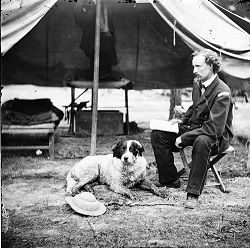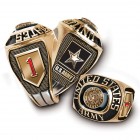A Historical Look at Military Service Animals: Part One

To some, the use of animals in the military is controversial, to others the use of animals in the military is highly welcomed and advantageous. Either way, there is no denying the fact that many of these animals faced great danger while protecting and serving their country. They deserve to be recognized for their service and sacrifice as our military service men and women do. Although the use of animals in the military is unappealing to some, it is in some cases necessary in order to save human lives. Here is a look at how animals have served in the military throughout the years.
Ancient Greece
Animals have been used in various military roles for thousands of years. In Ancient Greece, horses were used to pull Greek war chariots. Elephants were used in warfare as well. Alexander the Great used elephants during his battles. Hannibal Barca devised a military strategy in which he took a large amount of elephants across the Alps to fight the Romans, but many of those elephants died in route to Rome.
In Ancient Rome, elephants were prized possessions and were known to strike fear into the heart of its enemies. The only downside to using elephants is that they tended to panic very easy and were a liability. Once the elephants panicked, they could not be controlled and often trampled their own troops. In addition to the use of horses and elephants, the Roman Empire also used attack dogs in warfare.
Europe
Although the use of cavalry horses originated with the Scythians, the Europeans did not use them too much because their armored warriors had trouble maneuvering their weapons while riding astride horses. When the stirrup was introduced during the Middle Ages, more European soldiers were able to master the art of horseback riding while at war. As the use of cavalry horses increased, so did the use of heavy artillery and cannons. These weapons were pulled by horses. The Europeans also used war dogs to keep guard and transport messages.
United States
Horses weren’t used in the US military until the Revolutionary War when General George Washington created special cavalry units to fight in certain battles. These cavalry groups were called Continental Dragoons. These groups were so expensive to operate that they were immediately disbanded after the war was over. In 1800, the Continental Dragoons were reinstated to help fight on the western front against Native Americans and the Mexican Army, resulting in the birth of the United States Cavalry.
During the 19th-century, different cavalry groups were created to fight on both sides of the Civil War from 1861 to 1865. Almost 18,000 horses were used in the 1863 Brandy Station battle in Virginia alone, making it the largest cavalry battle ever fought in the Western Hemisphere of the world. According to The National Museum of War Medicine, at least one million horses died in service to the military during the Civil War. By the time the 20th century arrived, approximately 400,000 horses and service men were a part of the United States Calvary.
Although the use of animals in the military up until to the 20th-century was often used to gain strategic advantages, many human lives were saved because of these animals.
Related products you may like:
Testimonials:
-
I received my United States MA-1 Bravo Jacket yesterday and I am very pleased with it. Thanks
Charles W
-
Thank you very much for the two beautiful garments! Both the MA1-Bravo Jacket and the Concealed Carry Soft Shell Vest fit perfectly and are tailored to perfection. They are rugged and warm, exactly what I was looking for.
Ed J.
-
I received the jacket this past Wednesday. I just love it. Good quality, feels great, and looks sharp. I have been looking for such a jacket the past few years and have finally found it.
Edward A.
-
Dear Vetcom, Received the MA-1 Bravo Jacket yesterday. Thank you so very much, made a Veteran very happy. Was so hoping to have it on time for him to wear on Veterans Day and you made sure it was here in time. The jacket is beautiful and my husband just loves it. Again, thank you so very much and God bless.
Jessie H.






